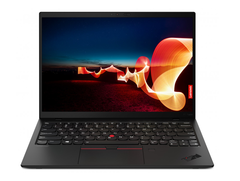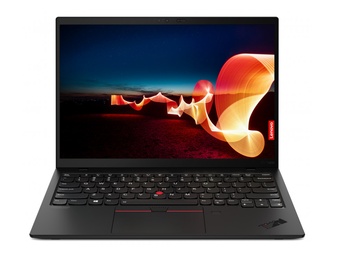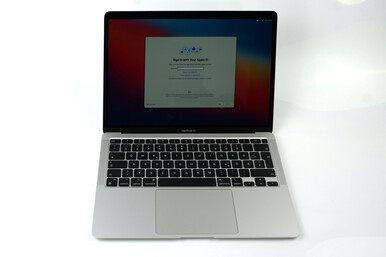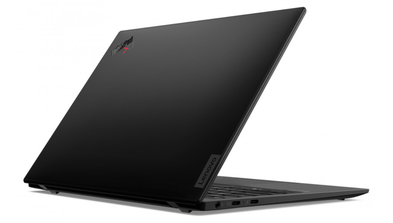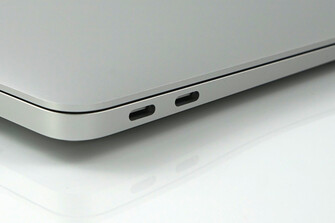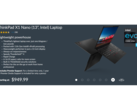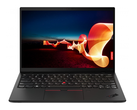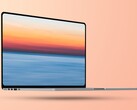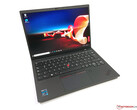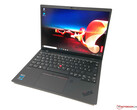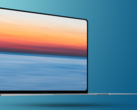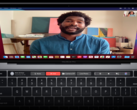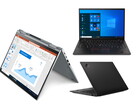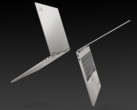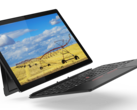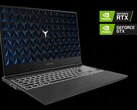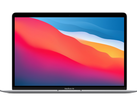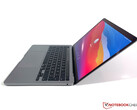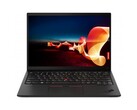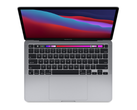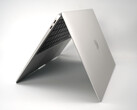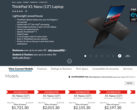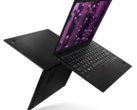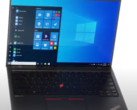Steve Jobs introduced the first MacBook Air back in 2008. Many users will still remember the video where the device was pulled out of a standard envelope. Lenovo did respond with a video of their own back then, where the ThinkPad X300, which offered much more ports, also fitted in such an envelope.
The ThinkPad X300 did not last long, though, and after two generations (X300 and X301), it was replaced by the X1 and later the X1 Carbon with a bigger 14-inch screen, while the MacBook Air is still one of the most popular notebooks today. Lenovo now introduces a new compact 13-inch laptop called the ThinkPad X1 Nano, so we compare it with the MacBook Air M1, which is quite a big hit thanks to Apple's own ARM processor and it also impressed us during our comprehensive review. We want to see how the two laptops compare and what customers can expect.
Note: This is only a preview, we expect the review unit of the new ThinkPad X1 Nano in 3-4 weeks, when we will also publish our comprehensive review with all the benchmark and measurement results.
Case: Aluminum Unibody vs. Carbon fiber and Magnesium
Apple still uses a unibody aluminum chassis, which is very well built. The X1 Nano is definitely a ThinkPad with its dark shell, which consists of carbon fiber and a magnesium alloy. We cannot say anything about the stability of the ThinkPad yet, but about the size and the weight. A direct comparison clearly shows that the new ThinkPad X1 Nano is slimmer, has a smaller footprint, and it is also almost 400 grams lighter than the MacBook Air.
Connectivity - Both laptops with limited port selection
While Lenovo made fun of the limited port selection of the Air in 2008, we can now see the same minimalistic approach. Both laptops only offer two USB-C ports as well as a 3.5 mm stereo jack. The ThinkPad offers two full-fledged Thunderbolt 4 ports though, and it can also be ordered with an integrated LTE or even 5G modem.
Input Devices - Best touchpad vs. best keyboard?
The MacBook Air offers the best touchpad/trackpad you can get. If you have ever used it, you automatically question why manufacturers of Windows laptops cannot copy it. The keyboard is not bad, either, but there are business laptops with better keyboards.
So is this automatically an advantage for the ThinkPad? We are not so sure right now, because the slimmer chassis also results in a reduced key travel. Two years ago, the key travel of the ThinkPad X1 Carbon was reduced from 1.8 vs. 1.5 mm, which is unfortunately very noticeable in practice. The keyboard is still good, but other ThinkPads like the X1 Extreme just have superior inputs. The key travel was now further reduced to 1.35 mm for the new ThinkPad X1 Nano, which might be a problem. We obviously have to try it, but we are afraid the quality will once again suffer.
Display - 16:10 vs. 16:10
While Apple was basically the only manufacturer with 16:10 display over the last couple of years, we now see more and more Windows laptops switching back from 16:9 to 16:10 aspect ratios. The two panels in comparison have different advantages: Apple offers more pixels, a slightly bigger screen size and wider P3 color gamut, while Lenovo uses a matte screen with a slightly higher brightness and the option for a touchscreen.
Performance: Apple M1 vs. Intel Evo
When we are talking about the performance, we are not comparing Apple and Lenovo, but Apple and Intel. The ThinkPad X1 Nano is equipped with Intel's current Tiger Lake processors, but it is the UP4 chip with a lower power consumption between 7-15 Watts. This is interesting, because it is the first time we have direct competitor for Apple's M1 ARM chip.
We have no benchmark figures for the "smaller" Tiger lake chips yet, so we just took a faster model for comparison. In this case Intel's NUC M15 reference design (Schenker Vision 15) and the benchmark Cinebench R23, which already runs natively on the new MacBook Air M1. The Tiger Lake processor (1165G7, UP3) can consume much more power (up to ~50W), but it is still clearly beaten by Apple's passively cooled entry-level chip. Considering that the Tiger Lake UP4 CPU in the X1 Nano is probably limited to 15 Watts, this looks pretty bad for Intel.
Storage Devices - PCIe-SSDs with limitations
Both laptops are equipped with PCIe-SSDs. The MacBook Air has soldered storage, but you can get up to 2 TB storage capacity directly from Apple. A quick look at the specs of the ThinkPad X1 Nano leaves us disappointed. You get a replaceable M.2-SSD, but it is a short 2242 drive, which is pretty rare. The interface is another problem, because you do not only not get PCIe 4.0, but the PCIe 3.0 is also limited to a 2x interface, which means the performance is unnecessarily limited.
Emissions and Battery Runtime
The MacBook Air does not have a fan, so it clearly beats the ThinkPad X1 Nano in this regard. The battery runtime could be an interesting topic. Lenovo advertises more than 13 hours, and some press texts even mention close to 18 hours. Apple definitely raised the bar, because the Air managed 16 hours in our Wi-Fi web browsing test.
Price: Apple with less expensive entry-level model
The base price of the Apple MacBook Air M1 is 1129 Euros and therefor much lower than the ThinkPad X1 Nano, which starts at around 1900 Euros. If you select similar components, however, the difference is much smaller. And is you select the extended 3-year warranty for the MacBook Air (249 Euros), you only have a difference of 11 Euros.
| ThinkPad X1 Nano | Apple MacBook Air M1 | |
|---|---|---|
| CPU | Intel Core i5-1130G7 (Tiger Lake UP4) | Apple M1 8C |
| GPU | Intel Xe Graphics (80 EUs) | Apple M1 8C |
| RAM | 16 GB LPDDR4X-4266 | 16 GB LPDDR4X |
| Display | 13-inch, 16:10, 450 Nits, sRGB | 13.3-inch, 16:10, 400 Nits, P3 |
| Resolution | 2.160 x 1.350 | 2.560 x 1.600 |
| Warranty | 3 years | 1 year |
| Price | 1889 € | 1629 € |
Initial Impressions: Many similarities, but the CPUs make all the difference
If you just look at the two notebooks for the first time, they seem to be very similar. Comparable screens, almost identical connectivity, and even similar prices when you get the same components and warranty periods.
Lenovo clearly has an advantage when you look at the size and especially the weight of the new case. Little more than 900 grams is an impressive figure, but we still have to see if it affects the stability. The MacBook Air on the other hand is heavier, but you just know that you get a very solid laptop in return.
The displays are also very comparable, because after years of 16:9 screens, the ThinkPad X1 Nano is finally back with a 16:10 panel. Lenovo's screen is matte, slightly brighter, supports HDR, and is also available as a touchscreen, while Apple offers more pixels and wider P3 color gamut.
The connectivity is also similar, even though the ThinkPad has the edge with Thunderbolt 4, faster Wi-Fi, and optional LTE or even 5G modules.
The big difference is the processor, even though we are not comparing Lenovo and Apple, but Intel and Apple. The X1 nano is one of the first laptops with Tiger Lake UP chips. they consume less power (7-15W) and compete directly with Apple's M1 processor if you look at the power consumption. We have no benchmark results for the UP4 CPUs, but all the values we have for faster Tiger Lake chips suggest that Apple's M1 processor is much faster and can still be cooled passively at the same time. We also don't expect the ThinkPad X1 Nano to last as long as the MacBook Air M1 on battery power.
Both devices have their own respective advantages and disadvantages, but the big thing is the performance. The superior M1 chip and the passive cooling setup are major arguments for the MacBook Air M1.




